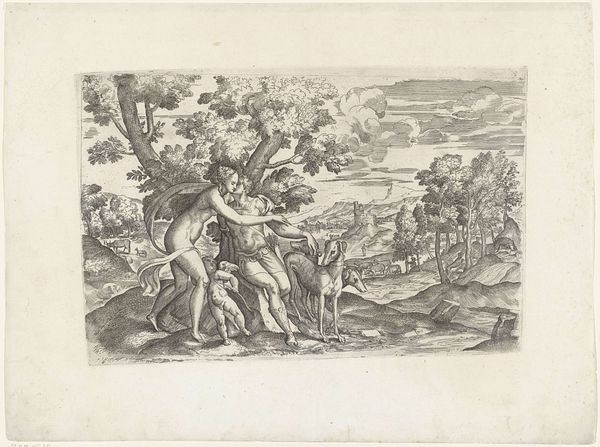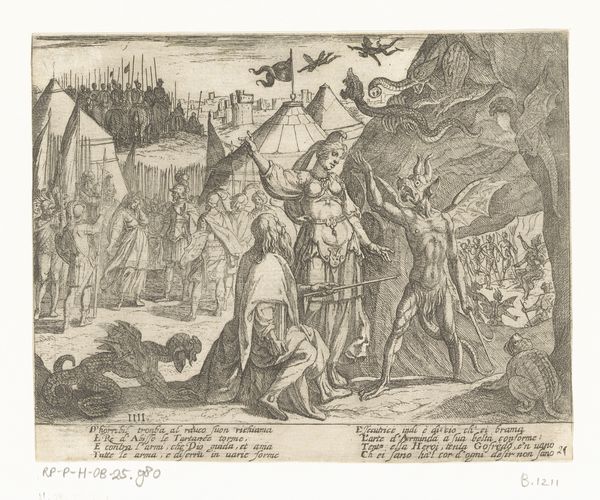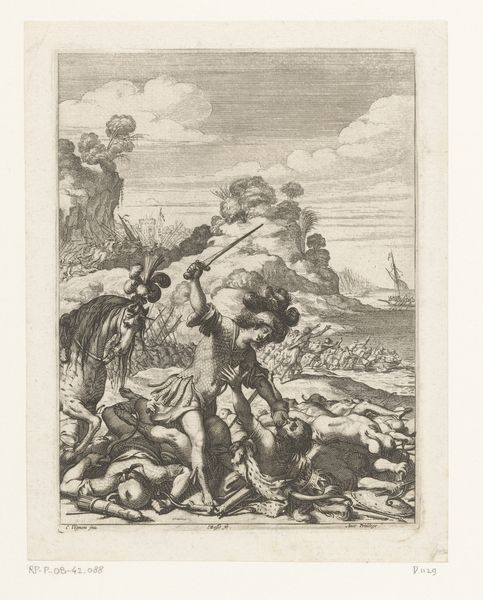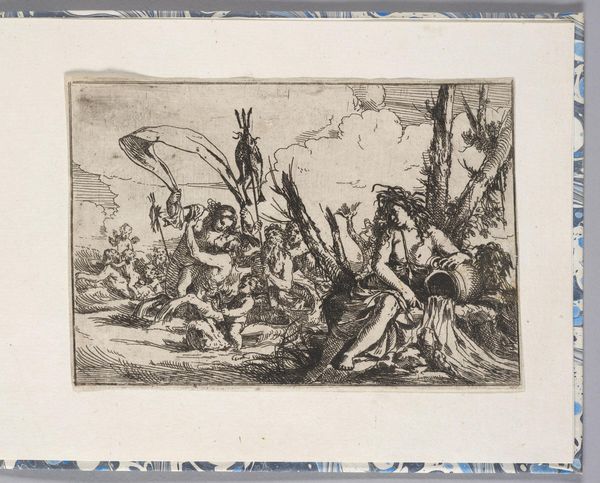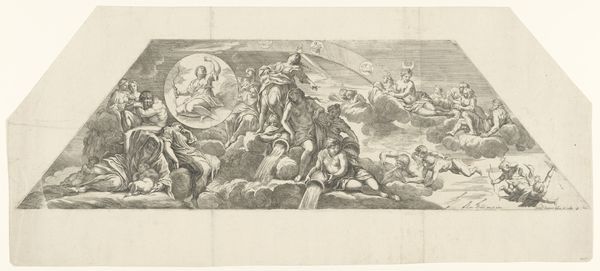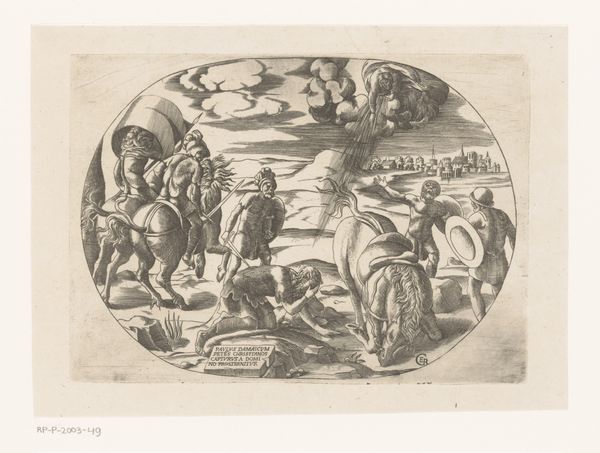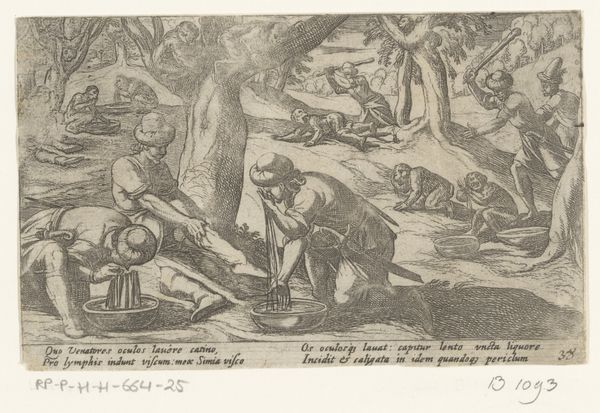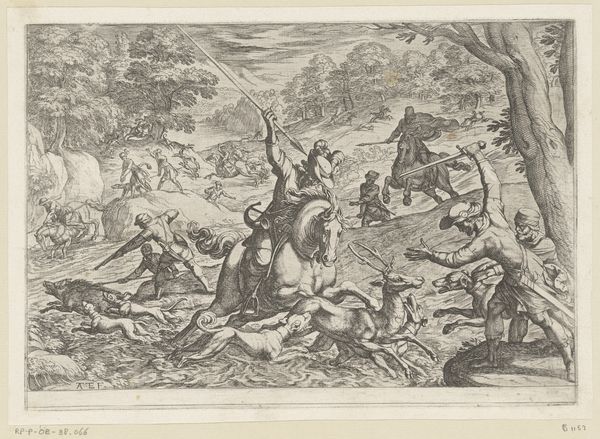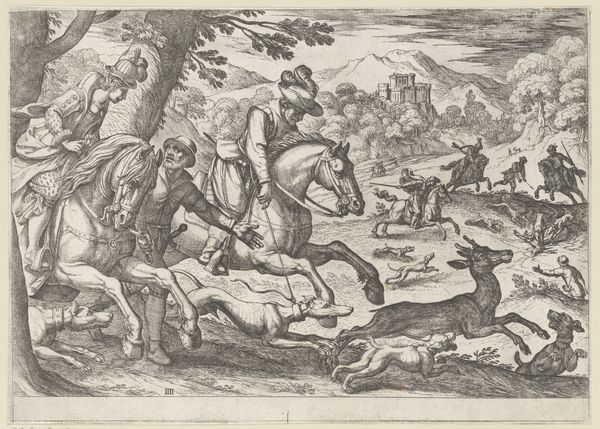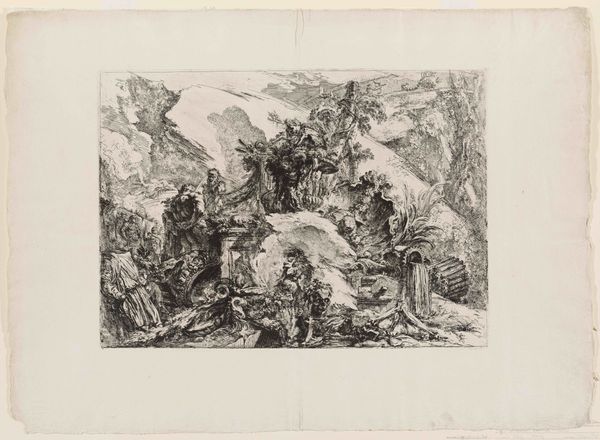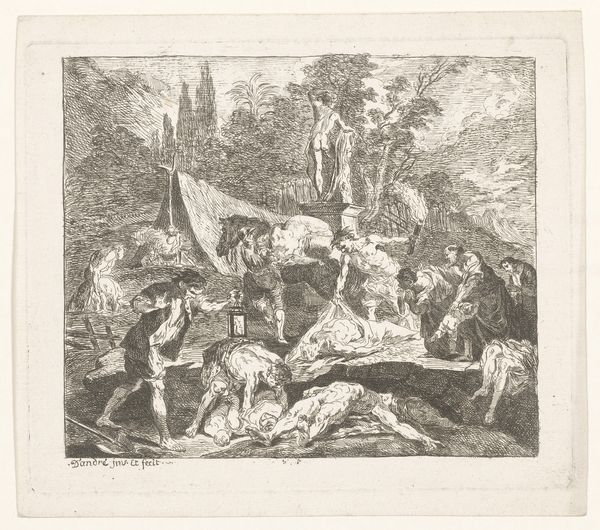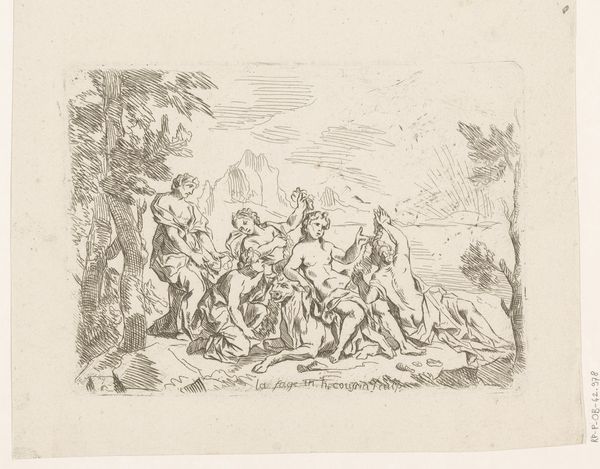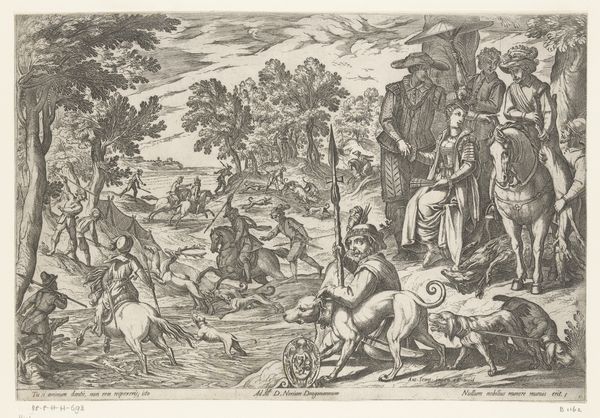
engraving
#
old engraving style
#
landscape
#
figuration
#
personal sketchbook
#
child
#
sketchbook drawing
#
genre-painting
#
history-painting
#
italian-renaissance
#
sketchbook art
#
engraving
Dimensions: height 332 mm, width 462 mm
Copyright: Rijks Museum: Open Domain
Editor: This is "Four Boys and a Putto in a Landscape" by Lorenzo Penni, an engraving from the late 16th century. I'm struck by how playful and intimate it feels despite the formal landscape backdrop. What do you see in this piece? Curator: I see a fascinating interplay between the idealized forms of the figures and the realities of the time it was created. This engraving comes at a moment when the Italian Renaissance's fascination with classical antiquity was deeply entwined with a growing interest in representing everyday life. Do you notice how the putto and the boys are situated in a landscape that is both idyllic and suggests an actual place? Editor: I see what you mean. It’s not just a generic backdrop, there's a sense of architecture and a lived-in space in the distance. So, are you suggesting this engraving offers a commentary on the role of childhood and innocence within the broader social and cultural context of the Renaissance? Curator: Precisely! Images of children during this period are rarely just sentimental. They often served didactic or allegorical purposes. The inclusion of a putto, a classical symbol of divine love, alongside these boys implies a connection between human and divine virtue. The politics of imagery in the Italian Renaissance was very concerned with presenting virtuous examples to the public. What statement, then, is Penni making? Editor: I guess it shows how everyday life could connect with larger philosophical and religious ideas, reflecting that even playful scenes of childhood contribute to the values that were admired by Renaissance society? That the good upbringing of future generations really mattered? Curator: Indeed! And engravings like this also played a crucial role in disseminating artistic ideas and ideals, especially within elite circles. What began as a reflection upon upper class family values quickly trickled down into society as these art forms spread. Editor: That makes so much sense. I now see this piece not just as a charming scene, but as a window into Renaissance values and the public role of art during that era. Curator: Exactly. It is also nice to remember that images hold immense power, especially back then, in shaping cultural perceptions and beliefs. It's something we have to keep reflecting upon today, don’t you agree?
Comments
No comments
Be the first to comment and join the conversation on the ultimate creative platform.
